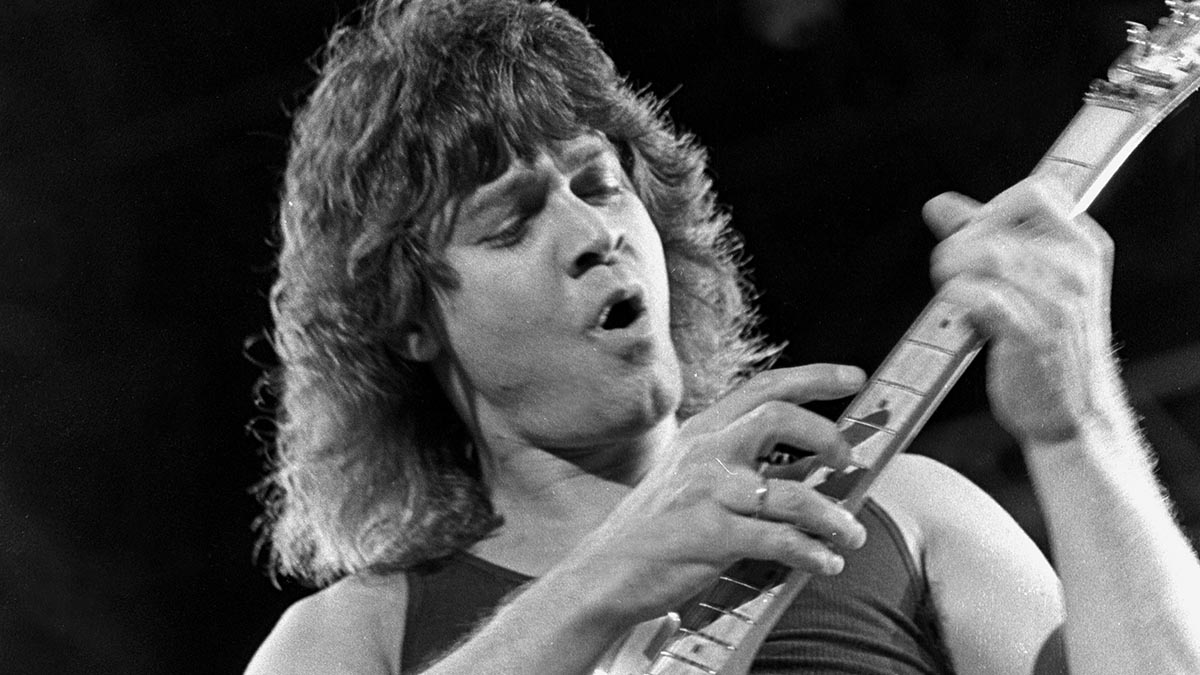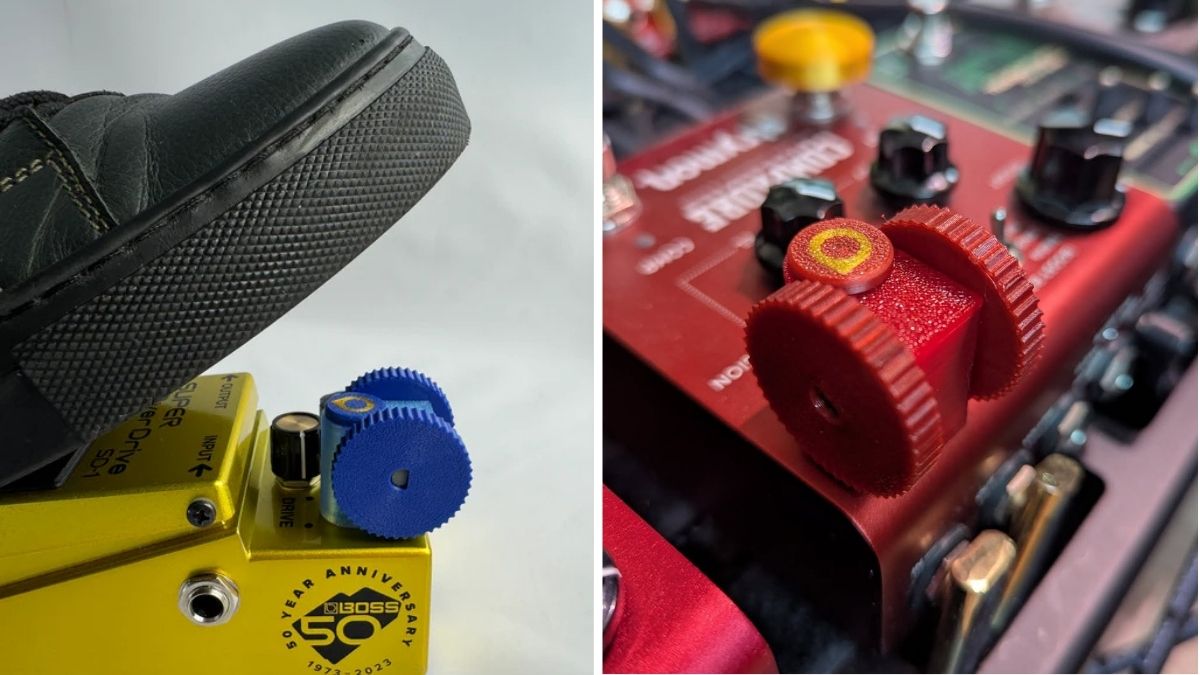Two-hand tapping is one of the most versatile guitar techniques you can learn – here are 5 ways to make it work for you
Tapping lit up the guitar world with Eddie Van Halen, but in this lesson, inspired by EVH, Joe Satriani, Nuno Bettencourt and more, you'll find all kinds of ways to add this legato superpower to your game

Finger tapping, also known at two-hand tapping, is an exciting technique which has been used by a number of guitarists over the years. The origins of this technique is often debated, with various views on the first players to use it.
There is no doubt that Eddie Van Halen brought this technique to the masses on Van Halen’s debut album; however tapping in various guises appeared years before Eddie popularised it. This technique has the ability to open up the guitar fretboard as an instrument similar to the piano, where both hands can be used to tap the strings to create a pitch.
Some electric guitar players have taken this to great heights, such as the jazz wizard Stanley Jordan and ex-Michael Jackson guitarist Jennifer Batten, who use all eight fingers across both hands to play the fretboard to great effect. New kid on the block Yvette Young is a modern player who has adopted some of the approaches to tapping used by Jordan and Batten.
There are then of course rock virtuosos like Steve Vai, Joe Satriani (and previous Guitar Techniques tutors Guthrie Govan and Paul Bielatowicz) who have their own approach, along with bands such as Polyphia, Sikth and Funeral for a Friend who use tapping to play riffs and melodies as a compositional tool.
These improvement exercises and study piece will show you various ways to use tapping, using both hands, sometimes using multiple fingers on both hands. If holding a plectrum, the second picking-hand finger is often used.
Some guitarists discreetly move their guitar pick to a different hand position, leaving the first finger free. I generally advise the former approach, which makes switching between a plectrum technique and tapping much easier.
However, who am I to argue with Van Halen, who used his first finger! If all digits are used to tap notes, you will have no choice but to ditch the pick, keeping it close for when it is needed next.
All the latest guitar news, interviews, lessons, reviews, deals and more, direct to your inbox!
One exciting aspect of tapping is that it allows you to perform large intervals on the fretboard, often at speed, which wouldn’t be achievable without this technique. For example, the average player wouldn’t be able to pay an A minor arpeggio on the first string, playing the 5th, 8th and 12th fret with one hand.
Having the picking hand available to tap the 12th fret opens up so many possibilities. Ahead you will see five examples and a study piece showing how tapping can be used in a variety of contexts. Do give it a go, as tapping is a great addition to your playing arsenal.
Get the tone
Amp Settings: Gain 5, Bass 4, Middle 5, Treble 6, Reverb 3
As our examples are not out-and-out rock, it’s best to avoid extreme levels of gain but simply add a little to help with sustain. Overly saturating your tone with distortion also opens up issues with unwanted string noise, so treat that knob with caution! A little compression is useful when tapping to help even out the dynamic range. Add delay and/or reverb.
Examples
Example 1. Single-string extended arpeggios
This first example is a Van Halen style line which outlines an A minor triad (A-C-E) with an added b7 (G) and 11 (D). In many ways, the first bar is trickier than the second because the slower phrasing is harder to play fluently compared to the final sextuplet run.
Example 2. Pentatonic lick
This uses shape 1 of the A minor pentatonic scale combined with tapped notes on the 12th fret of each string. Watch out for the fretting-hand taps when descending the scale in the second bar. Now is also a great opportunity to check your muting technique, which is vital when tapping.
Example 3. String skipping and tapping
Nuno Bettencourt is a purveyor of this technique, which he uses to create fluid arpeggiated lines. This example takes an A minor arpeggio on the sixth string and moves it up two octaves to the fourth and second strings. Regarding the muting topic, some players use a hair band or string mute placed at the 1st fret.
Example 4. Ostinato-style tapping
This example takes a tapped ostinato melodic line (short repeated melodic phrase) with the picking hand while the fretting hand taps root and 5th intervals lower down the fretboard. This idea is an introduction to the the technique of Stanley Jordan, in a style reminiscent of Funeral for a Friend.
Example 5. Chordal Tapping
The final example here illustrates how Joe Satriani may apply two-hand tapping to play piano-inspired lines. You will need to put your plectrum down for this example because you are required to used two fingers with your picking hand. Aim for consistency with your timing and tone (and watch your muting!).
Study Piece: incorporating the various ideas
[Bars 1-8] We begin with a two-hand tapping idea similar to that in example 4. The fretting hand plays a series of roots and 5ths over a four-chord progression, while the picking hand taps a melodic line. Aim for consistency with tone and timing. After a lick a bar 9 we play a single-string arpeggio between bars bars 10-17.
The arpeggios outline the chord progression, which suits the tapping style well. In bars 18-25 we build upon the previous section with a series of fast sextuplet runs. Each pattern is repeated multiple times, which makes this idea a little less daunting but no less impressive.
This section ends with a fretting-hand slide to resolve the phrase. Aim for fluidity here, especially when switching positions midway through.
We end with a sextuplet pentatonic lick at bar 26 before a final tap and pull-off. Take as much or as little as you want from this lesson and consider introducing tapping to your regular musical repertoire.
Simon is a graduate of the UK's Academy of Contemporary Music and The Guitar Institute, and holds a Masters degree in music. He teaches, examines and plays everything from rock to jazz.


